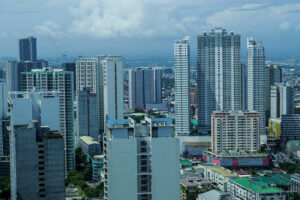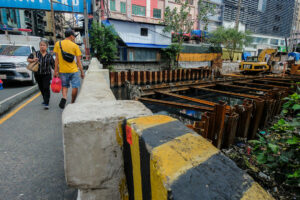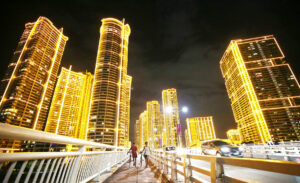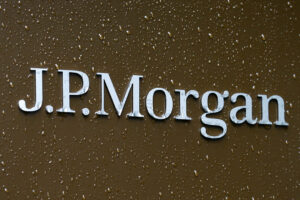THE PHILIPPINE ECONOMY may see a slowdown until early 2026 as the controversy over anomalous infrastructure projects dampens government spending, Finance Secretary Ralph G. Recto said on Tuesday.
At a Senate hearing for the Department of Finance budget, Mr. Recto said growth likely slowed in the third quarter as President Ferdinand R. Marcos, Jr. implemented reforms amid the corruption scandal.
“This (slowdown) could stretch until the first quarter of next year,” he said. “The recent flood control controversy may have cast a shadow on public spending, but this is the start of a cleanup, and we only see upside over the next few months.”
In July, Mr. Marcos flagged irregularities in flood control projects and launched the sumbongsapangulo.ph website, which lets citizens report substandard or nonexistent public works.
“The President himself is the whistleblower of this controversy. And his message is clear: We will never turn a blind eye to corruption,” Mr. Recto said.
The corruption scandal sparked investigations by the Senate, the House of Representatives, Justice department, and the newly formed Independent Commission for Infrastructure. It also renewed scrutiny over the Department of Public Works and Highways (DPWH), slowed infrastructure spending, and triggered a P255-billion cut in the DPWH’s budget for 2026.
“If part of the budget hadn’t been lost to corruption, the economy might’ve been growing by around 6% to 6.2%, and revenue collections from the BIR (Bureau of Internal Revenue) and BoC (Bureau of Customs) would’ve been higher,” Mr. Recto said.
Despite this, he remained confident that the economy would still meet the lower end of the government’s 5.5% to 6.5% growth goal this year.
In the first six months of the year, the country’s gross domestic product (GDP) growth averaged 5.4%.
The Finance chief also noted that weather-related disruptions affected economic activity in the third quarter.
“Our approach is anticipatory and strategic, ensuring that available fiscal space is directed toward high-impact, fast-disbursing projects to counteract the potential growth slowdown and help keep full-year GDP growth within the DBCC (Development Budget Coordination Committee) assumptions,” Mr. Recto said.
Mr. Recto said it may take the government two to three quarters “at most” to address the flood control issue but infrastructure spending will “definitely contract next year.”
Meanwhile, Economy Secretary Arsenio M. Balisacan said meeting the full-year growth target has “become harder” amid a likely slowdown in government spending and persistent external headwinds.
“But we’ll wait for the release of the third-quarter economic performance (in the first week of November) before the DBCC makes a move,” he told BusinessWorld in a Viber message on Tuesday.
The Philippine Statistics Authority will release first-quarter GDP data on Nov. 7.
MORE RATE CUTSMr. Recto, who sits on the Monetary Board, said more rate cuts will be “good for the economy.”
“It all depends on the lookout for inflation. For now, it looks like it will be within target, and we have reduced interest rates already. Hopefully, another rate cut,” he said.
The Bangko Sentral ng Pilipinas (BSP) last week cut its key policy rate by 25 basis points to 4.75% as it sought to support economic growth as the corruption scandal darkens the outlook.
BSP Governor Eli M. Remolona, Jr. last week left the door open for another cut at the Dec. 11 meeting, and possibly more next year.
Mr. Recto said the slowdown in global trade and the threat of a 100% US tariff on Chinese goods will be factored into the BSP’s next policy move.
Meanwhile, the government remains on track to meet its revenue target this year, the Finance chief said.
“We will hit our revenue targets for the entire year. And our revenue-to-GDP ratio is climbing, we’re already at roughly 16.5%,” Mr. Recto said. “Clearly, the problem lies on the expenditure side, not on the revenue side.”
The government aims to collect P4.52 trillion this year, climbing to P4.98 billion in 2026, based on the 2026 Budget of Expenditures and Sources of Financing.
However, the BIR and BoC are expected to fall slightly short of their 2025 collection goals of P3.22 trillion and P958.7 billion, respectively.
Mr. Recto also noted that slowing economic growth and global uncertainties such as the higher US tariffs are affecting revenue collection. — Aubrey Rose A. Inosante

















